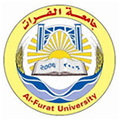آخر الأخبار
تقييم فعالية خلائط من مبيدات أعشاب القمح والتأثير السمي لها في نوعي القمح القاسي والطري بوادي الفرات الأدنى
2010, Volume 1, issue 1,pp 304-321| Cite as
Evaluation of efficacy of tank-mixed herbicides and their phytotoxicity to triticum durum L.aestivum L.in Euphrates down valley
| authors |
ALmouthana Alrahbi, Samer Tabash, Asoud Mouhamed |
| Abstract |
The field experiment was conducted in Deir Ezzor Agric. Scie. Res. Center at season 2007/08 aimed to evaluation of many tank mixed broadleaved and grass weed herbicides (Achieve+Lintur, Pikto+Lintur, RalonS+Express, Traxus+Express, Monitor, Archipel and Atlantis) and the susceptibility of both durum wheat (Triticum durum L.) and soft wheat (T. aestivum L.) to the this herbicides. The results showed that the most dangerous grassy species (Poacea) was Phalaris paradoxa L. The results of evaluating the herbicide phytotoxicity effects on wheat showed that crops response to herbicides has varied greatly by herbicides and wheat species susceptibility, as dual purpose sulfonylurea herbicides (SU’s) were the higher phytotoxic, especially Monitor. Durum wheat (Doma-1) was more in a significance than soft wheat (Sham-8). Traxus and SU’s has achieved the highest efficiency and exceeded most of the treatments significantly. Herbicides efficacy results demonstrated that new dual-purpose sulfonylurea herbicides (ALS enzyme-inhibitor) could be a choice within the chemical wheat control program in Euphrates Down Valley to use alternatively with ACCase to avoid weed resistance. Key words: Wheat, weeds, herbicides, phytotoxicity, Efficacy. |
| الكاتب |
المثنى الرحبي,سمير طباش ,أسود محيمد |
| الملخص |
نفذت هذه الدراسة في موسم 2007/08 في محطة سعلو التابعة لمركز البحوث العلمية الزراعية بدير الزور، بهدف تقييم الفعالية البيولوجية لسبعة معاملات من خلائط مبيدات الأعشاب لمكافحة أعشاب القمح الرفيعة والعريضة معاً وهي: Achieve+Lintur و Pikto+Lintur و RalonS+Express و Traxus+Express وMonitor وArchipel و Atlantis، ودراسة حساسية صنفي القمح (القاسي والطري) لها. وتبين أن نوع ذيل القط (Phalaris paradoxa (Poaceae كان الأكثر انتشاراً ، كانت سمية معظم المعاملات المختبرة منخفضة نسبياً على محصول القمح، وبذات الوقت تباينت فيما بينها؛ فكانت مشتقات سلفونيل يوريا أكثرها سمية وبخاصة معاملة Monitor، وكان القمح القاسي (دوما1) حساساً أكثر من القمح الطري (شام8) تجاه المبيدات المختبرة. كما أظهرت النتائج الفعالية العالية نسبياً للمبيد التجريبي Traxus ومبيدات سلفونيل يوريا في مكافحة العشبة الهامة ذيل القط. وخلصت الدراسة إلى أنه يمكن اعتماد بعض مشتقات سلفونيل يوريا المثبطة لأنزيم ALS المسجلة حديثاً بسورية، كخيار ضمن برنامج مكافحة أعشاب القمح بوادي الفرات، وذلك لاستخدامها بالتناوب مع مجموعة المركبات المثبطة لأنزيم ACCase لتأخير ظهور صفة المقاومة لدى الأعشاب. |














